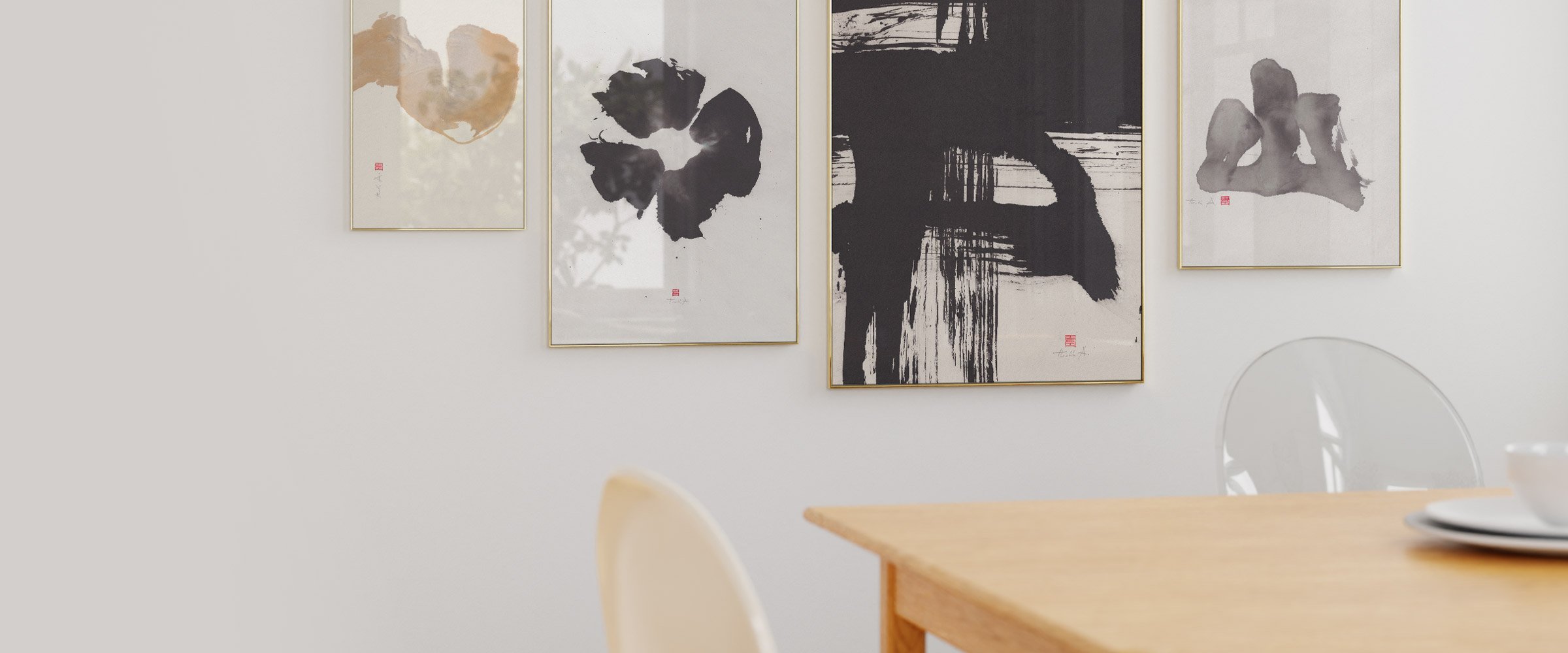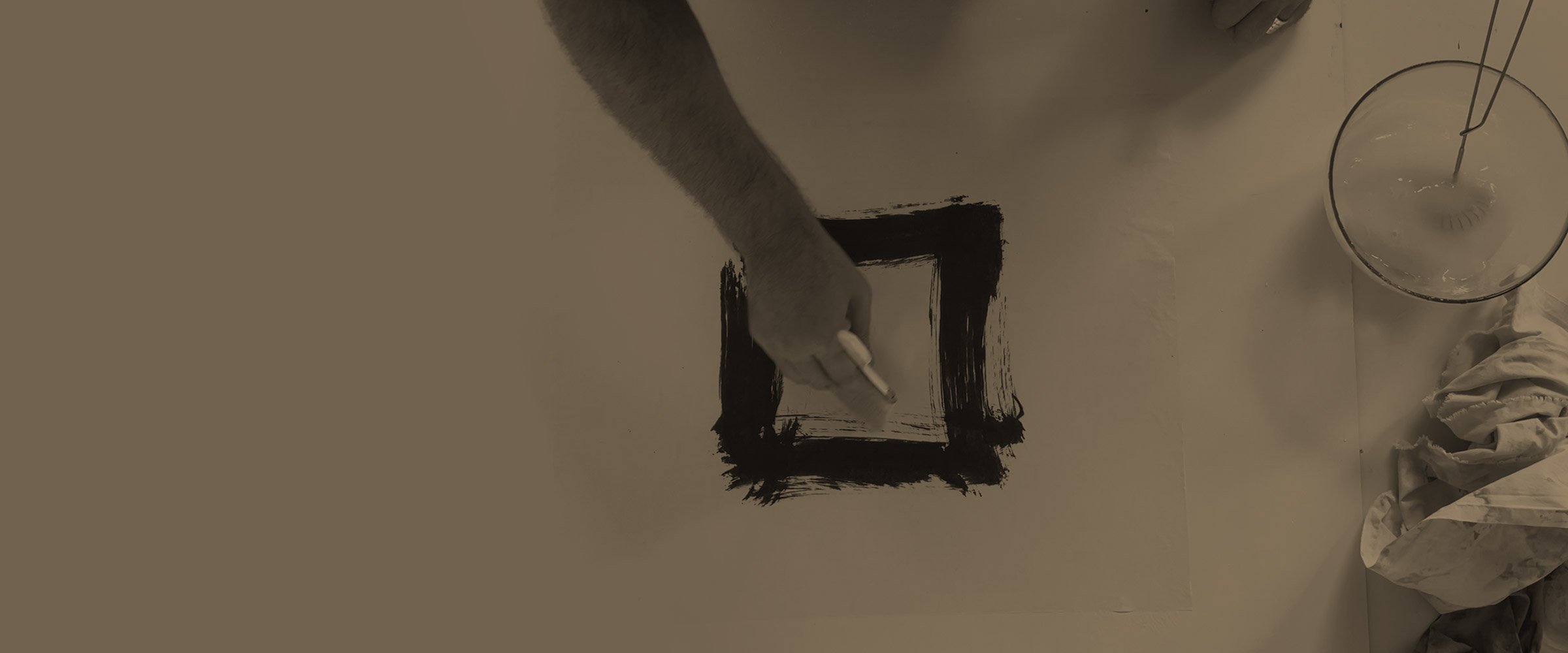

>
Life can only be found in the present moment.
— Thich Nhat Hanh –
<
—
gestural + calligraphic expressions:
TAOGRAMS
While working with Japanese Sumi ink (or Chinese ink), Thoth is particularly interested in the movement of the brush and the trace this gesture leaves on the paper. This approach is both calligraphic and gestural, deeply rooted in the Japanese traditions of Shodo¹, Zenga², Bokuseki³, and Hitsuzendo⁴, while also relating to the post–World War II art movement of Abstract Expressionism.
Many artworks in this ongoing series are based on Chinese characters and Japanese kanjis. However, Thoth uses the same approach for signs, symbols, and abstract concepts as well.
He does not limit himself to actual, readable language; instead, his focus lies on the gestural expression, the state of mind, and the final composition.
In this way, the drawing becomes a depiction of a certain energy (Qi) at a specific moment — a snapshot of the ongoing flow of Tao⁵ or a symbol of the theme or word he was contemplating.
Therefore Thoth calls this body of work taograms, to distinguish it from pictograms, logograms, or ideograms, which refer to predefined, written language and signs.
>
Selected artworks from this series:
Hairpin | Track N°1
Sprout
Mountain Chain | Track N°40
Taogram N°17
Taogram N°19, Track N°6, Triangle + Stony Heart
Wave
Taogram N°32
Pouring Rain
Mare E Monti
Dreamcatcher
Track N°37 + N°38
O
See available Taograms:
¬
Glossary of related terms:
¹
Shodo (裛道) : Japanese calligraphy, which is both an artistic and a mindful, meditative activity. Sho means ‘to write’, and do translates as ‘the path’ or ‘the Tao’.
²
Zenga (禅画) : The practice and art (painting and calligraphy) created by Zen Buddhist monks. Zen refers to meditation, and ga (画) is the Japanese word for ‘picture’.
³
Bokuseki (湋鍻) : Translates as ‘ink trace’ and refers to a specific style of Zenga. It is a form of active meditation where bold, expressive, and often abstract brush strokes are made with a single breath, representing the calligrapher’s pure state of mind in a single moment (nowness).
⁴
Hitsuzendo (筆禅道) : Translates as ‘the way of Zen through the brush’ and is believed by Zen Buddhists to be a method of achieving samādhi (unification with the highest reality). The aim is to free one’s mind and heart from any disturbances, achieving a state of no-mind while focusing solely on the meaning of the character being written. The essence of hitsuzendo lies in becoming one with what you create.
⁵
Tao (道) : A fundamental concept in Taoism, representing the natural way of existence — the underlying principle that encompasses harmony, balance, and the interconnectedness of all things. The word Tao translates as way, path, road, doctrine, principle, truth, or flow; however, its meaning goes far beyond these translations. As Laozi said, the Tao is “eternally nameless”.
I

